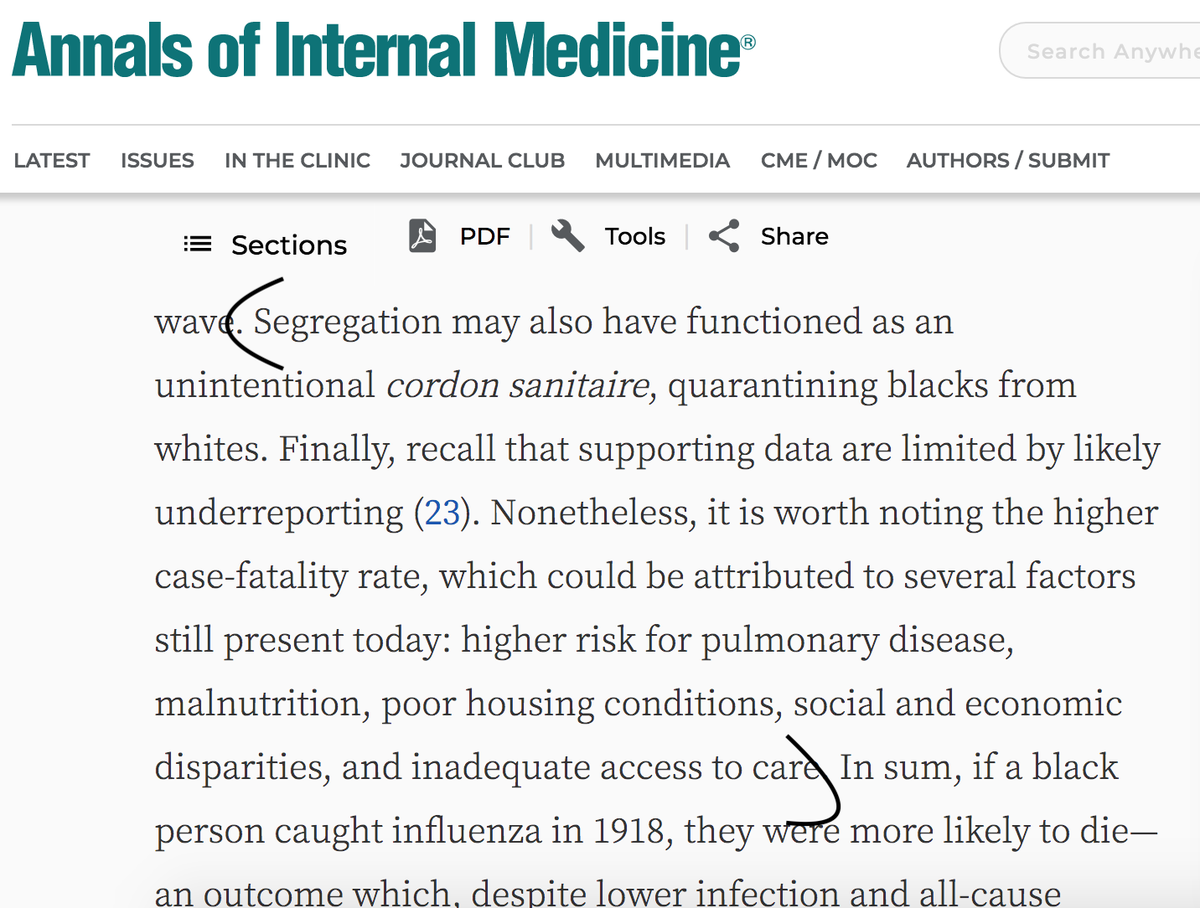I've been thinking a lot about a great question that came up in conversation b/ween me, @DrChelleMD, @AJohnsonHist
on a webinar hosted by @eben_kirksey. We were discussing historiography of 1918-19 influenza, racial disparities, & #COVID19 +
on a webinar hosted by @eben_kirksey. We were discussing historiography of 1918-19 influenza, racial disparities, & #COVID19 +
A strange aspect of 1918 influenza was the lower (as far as we know) morbidity and mortality amongst Black Americans - an outlier amidst other pandemics. Why? And what does this mean for the historical analysis? +
We dwelt a bit on the higher case fatality rate, and how @DrChelleMD & I explain that concept to our vulnerable patients. For example, "if you contract influenza you're more likely to die from it." +
But we then talked about segregation and the point made by us and prior historians that it may have functioned as a cordon sanitaire - unintentionally quarantining and protecting Black Americans, especially during subsequent influenza waves +
Was thinking about James Baldwin's profound point on segregation:
"Apathy & ignorance...the price we pay for segregation. That's what segregation means - that you don't know what's happening on the other side of the wall, bc you don't want to know"
"Apathy & ignorance...the price we pay for segregation. That's what segregation means - that you don't know what's happening on the other side of the wall, bc you don't want to know"
It struck me - perhaps THAT'S meta-historical question. Not just undercounting, limited data, a sparse archive. It's the line of separation. It's not knowing what's happening on the other side of the wall. 100 years later, we still don't know.

 Read on Twitter
Read on Twitter


